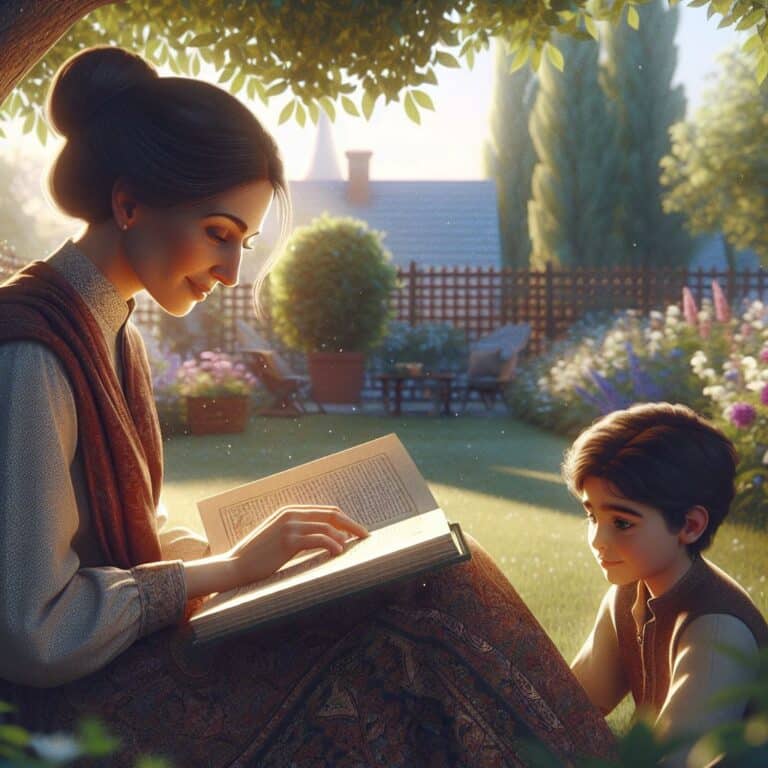Key Takeaways
Winter reading activities for kids can be a delightful way to keep them engaged indoors while fostering a love for literature and creativity. Here are some key takeaways to get started:
- Interactive reading sessions can make books come alive, enhancing children’s understanding and enjoyment.
- Combining reading with daily activities, such as cooking or crafting, can deepen comprehension and make learning fun.
- Family involvement in reading activities strengthens bonds and creates lasting memories.
- Integrating activities with reading boosts creativity and critical thinking skills in children.
- Using diverse activities like acting, cooking, and crafting keeps reading fresh and engaging.
Engage Kids with Creative Winter Reading Activities
As the snowflakes fall and the temperatures drop, we often find ourselves seeking warmth indoors. This winter, let’s transform those cozy days into opportunities for our kids to explore the magic of reading. Engaging children in winter reading activities not only nurtures their love for books but also sparks their creativity and imagination.
Make Reading Sessions Interactive
One of the most effective ways to captivate a child’s interest in reading is by making the experience interactive. When children actively participate in the storytelling process, they develop a deeper connection with the material. Here are some ways to make reading sessions more interactive:
- Ask open-ended questions about the story to encourage critical thinking.
- Invite children to predict what might happen next in the story.
- Have them draw or craft scenes from the book, which reinforces comprehension.
Combine Reading with Daily Activities
Books can be more than just stories; they can inspire real-world activities that enhance learning. By integrating reading with daily activities, children can see the practical application of their newfound knowledge. For more ideas, check out 10 fun ways to encourage reading during the holiday season.
- After reading a book about cooking, invite kids to help prepare a related meal.
- Use a book about nature to inspire a backyard exploration or indoor plant project.
- Read a book about space and then create a simple model of the solar system together.
Involve the Entire Family
Reading activities are not just for kids; they’re a wonderful way for the entire family to bond. When everyone participates, it creates a shared experience that strengthens family ties and makes reading a cherished family tradition. Here’s how you can involve everyone with some fun and educational indoor ideas:
- Host a family book night where each member shares a favorite story.
- Take turns reading aloud, allowing each person to add their own flair to the storytelling.
- Create a family book club and discuss the themes and lessons from the stories.
Benefits of Integrating Activities with Reading
When reading is paired with activities, it becomes more than just an educational task; it becomes a dynamic learning experience that offers numerous benefits.
Improved Comprehension and Memory
Interactive reading activities can significantly enhance a child’s comprehension and memory. When children engage in hands-on activities related to a story, they are more likely to remember details and understand complex concepts. For instance, after reading a book about animals, a visit to the zoo can help solidify their knowledge about different species.
Research shows that children learn better when they can connect reading material to real-life experiences. This method helps in retaining information and applying it in various contexts. For more ideas on how to engage children, explore these fun and educational indoor activities.
| Activity | Comprehension Benefit |
|---|---|
| Cooking a meal from a book | Enhances understanding of cultural contexts |
| Acting out scenes | Improves memory retention through physical activity |
Boosts Creativity and Critical Thinking
Reading activities that encourage children to think creatively and critically can have a lasting impact on their development. When kids are tasked with creating their own endings to stories or designing artwork based on a book, they learn to think outside the box and analyze situations from different perspectives. For more ideas, check out this list of educational indoor activities.
“Creativity is intelligence having fun.” – Albert Einstein
By encouraging children to express themselves creatively, we foster an environment where they feel confident to explore new ideas and solutions. For instance, incorporating holiday stories into adventures can be a great way to stimulate their imagination.
Strengthens Family Bonds
Engaging in reading activities as a family can bring everyone closer together. It provides a shared goal and an opportunity for quality time, free from the distractions of screens and everyday stressors. When families read and learn together, they create a supportive environment that values education and personal growth. For some creative ideas, check out these fun ways to encourage reading during the holiday season.
Fosters Lifelong Learning
Most importantly, by integrating reading with activities, we instill a love for lifelong learning in our children. They learn that knowledge is not just something to be consumed but something to be experienced and lived. This approach encourages curiosity and a desire to explore the world around them, both in books and beyond. Discover how to turn holiday stories into adventures to further engage young readers.
Cooking Meals Inspired by Stories
Cooking is a fantastic way to bring stories to life. It engages multiple senses and offers a delicious reward for your efforts. Here’s how you can turn your kitchen into a literary adventure:
Choosing a Book with Food Elements
Start by selecting a book that features food prominently. It could be a story set in a particular culture known for its cuisine or a tale where food plays a pivotal role. Books like “Charlie and the Chocolate Factory” or “Green Eggs and Ham” are perfect examples.
Simple Recipe Preparation
Choose recipes that are simple enough for children to help with. This could be making chocolate treats inspired by Willy Wonka’s factory or preparing a breakfast dish like green eggs and ham. Here’s a simple recipe to get started:
Green Eggs and Ham Recipe:
- Ingredients: 4 eggs, 1 tbsp milk, green food coloring, 4 slices of ham
- Instructions: Beat the eggs with milk and a few drops of food coloring. Cook in a pan and serve with ham.
Cooking as a Team
Invite your child to participate in the cooking process. Assign age-appropriate tasks like stirring, measuring ingredients, or setting the table. This not only teaches them valuable skills but also makes them feel like an integral part of the activity.
Acting Out Scenes or Creating Mini-Plays
Acting out scenes from a book is a wonderful way to deepen a child’s understanding of the story and characters. It allows them to step into the shoes of their favorite characters and explore the narrative from a new perspective. For more inspiration, check out these indoor activities for kids that can keep them entertained during the winter months.
Selecting Key Scenes
Choose a few key scenes from the book that are rich in dialogue or action. These will be the most engaging for children to perform. Consider scenes that involve their favorite characters or pivotal moments in the story.
Assigning Family Roles
Assign roles to each family member, ensuring that everyone has a part to play. This could be as simple as narrating the story or as involved as taking on a main character’s role. Encourage children to use their imagination and add their own twists to the characters.
Rehearsing and Performing
Spend some time rehearsing the scenes together. Allow children to experiment with different ways of expressing emotions and actions. When everyone feels ready, perform the mini-play for other family members or friends. It’s a great way to build confidence and public speaking skills.
Watching Movie Adaptations Together
After reading a book, watching its movie adaptation can be an exciting way to see the story come to life. It offers a visual representation of the narrative and can lead to interesting discussions about the differences between the book and the film.
Selecting Book and Movie Pairings
| Book | Movie |
|---|---|
| The Chronicles of Narnia | The Lion, the Witch and the Wardrobe |
| Harry Potter Series | Harry Potter and the Sorcerer’s Stone |
Choose a book and its movie adaptation that your child is interested in. This could be a classic like “The Chronicles of Narnia” or a modern favorite like “Harry Potter.” Make sure the movie is age-appropriate and aligns with your family’s viewing preferences. For more ideas, check out these winter activities for kids that are both fun and educational.
Comparing Book and Movie
After watching the movie adaptation, it’s important to engage kids in a discussion about the similarities and differences between the book and the film. This activity not only enhances comprehension but also encourages critical thinking as children analyze the two formats.
Ask questions like, “How did the movie differ from the book?” or “Which parts of the book were left out in the movie?” These questions help children pay attention to details and understand the artistic choices made in adaptations.
Family Discussion
Gather the family for a discussion about the themes and messages of both the book and the movie. Encourage each member to share their favorite scenes and characters, and explain why they resonated with them. This can lead to a deeper understanding of the story and its impact. For more ideas, check out these indoor activities for kids.
Consider using a family discussion guide to facilitate the conversation. This guide can include questions about character development, plot twists, and the overall message of the story.
Researching Non-Fiction Characters or Historical Figures
Researching real-life characters or historical figures mentioned in books can be a fascinating way for children to connect literature with the real world. It allows them to dive deeper into history and learn about influential people who have shaped our world.
Selecting a Character or Figure
Example: If your child reads a book about Martin Luther King Jr., encourage them to research his life, achievements, and impact on the civil rights movement.
Choose a non-fiction character or historical figure from the book that piques your child’s interest. This could be a prominent figure like Amelia Earhart or a lesser-known individual who played a significant role in history. For more ideas, check out these fun ways to encourage reading during the holiday season.
Discuss with your child why this character is important and what they hope to learn from their research. Setting clear objectives will guide their exploration and make the activity more meaningful.
Conducting Research
Guide your child in gathering information from various sources such as books, online articles, documentaries, and interviews. Encourage them to take notes and organize their findings in a way that makes sense to them.
Help them distinguish between credible sources and unreliable ones. This is an essential skill that will serve them well in future research endeavors.
Creating Presentations or Reports
Once the research is complete, have your child create a presentation or report to showcase their findings. This could be a simple poster, a PowerPoint presentation, or a written report.
Encourage creativity by allowing them to include illustrations, maps, and timelines. This not only makes the presentation more engaging but also helps them visualize the information they’ve gathered.
Writing Letters to Living Authors or Characters
Writing letters to authors or fictional characters can be an exciting way for children to engage with literature. It provides an opportunity for them to express their thoughts and feelings about a book and its characters.
Guiding Thoughtful Letter Writing
Start by guiding your child to think about what they want to say in their letter. Encourage them to share their favorite parts of the book, ask questions, or express how the story made them feel.
Provide a simple letter template to help them structure their thoughts. Remind them to be polite and respectful in their writing.
Sending and Receiving Responses
If the author is living, consider sending the letter to them. Many authors appreciate hearing from young readers and may even respond. This can be an incredibly rewarding experience for your child.
In cases where it’s not possible to send the letter, encourage your child to imagine how the character or author might reply. This exercise in imagination can be just as fulfilling.
Imagining Characters’ Replies
Have your child write a response from the character’s perspective. This allows them to delve deeper into the character’s personality and motivations, enhancing their understanding of the story.
Encourage them to be creative and have fun with this activity. It’s a great way to develop empathy and perspective-taking skills.
Creating Art Projects Inspired by Books
Art projects are a fantastic way for children to express their creativity and interpret the stories they read. By creating artwork based on a book, children can explore the themes, settings, and characters in a visual format.
Choosing Artistic Elements
Help your child choose elements from the book that they find inspiring. This could be a scene, a character, or a theme. Discuss why they chose these elements and what they hope to convey through their art.
Gathering Materials
Gather the necessary art supplies based on the chosen project. This could include paints, markers, clay, or recycled materials. Encourage your child to be resourceful and use items they already have at home. For more creative ideas, explore why kids who read joke books are more confident and creative.
Encouraging Creative Expression
Allow your child to express themselves freely through their art. Avoid dictating how the project should look and instead, ask open-ended questions that prompt them to think creatively.
Display their artwork proudly around the house to show that you value their creative efforts.
Example Project: Create a diorama of a favorite book scene using a shoebox and craft materials. This hands-on project enhances spatial awareness and attention to detail.
Building Book-Themed Forts or Models
Building forts or models based on book settings can be an exciting way for children to immerse themselves in the world of the story. This activity combines creativity, engineering, and storytelling, making it both educational and fun. For more ideas on keeping kids engaged, check out this holiday reading challenge.
Encourage your child to think about the setting of their favorite book. Is it a magical castle, a cozy cottage, or a futuristic city? Discuss the features that make this setting unique and how they can replicate them in their fort or model. For more ideas, check out these fun ways to encourage reading during the holiday season.
Use household items like blankets, pillows, cardboard boxes, and furniture to construct the fort. Encourage your child to be inventive and resourceful, using what they have to bring the book’s setting to life.
Once the fort or model is complete, add detailed features like decorations, furniture, or characters to enhance the scene. This activity not only promotes creativity but also helps children develop problem-solving and planning skills. For more ideas, check out these fun and educational indoor activities for kids.
Example: Create a “Harry Potter” Hogwarts fort using blankets for walls, a flashlight for a wand, and paper cutouts for house banners.
Selecting a Setting from the Book
Choose a setting that your child finds intriguing or inspiring. This could be the Enchanted Forest from “The Chronicles of Narnia” or the cozy burrow from “The Wind in the Willows.”
Constructing with Household Items
Guide your child in using everyday items to build their fort or model. Encourage them to think creatively about how to use materials in new ways.
Example: Use chairs and bedsheets to create a tent-like structure, then add string lights for a magical touch.
Discuss with your child how they can incorporate elements from the book into their construction. This could include creating a drawbridge for a castle or adding foliage for a forest setting.
Adding Detailed Features
Once the basic structure is complete, focus on adding details that bring the setting to life. This could include creating small props, drawing scenery, or adding figurines.
Encourage your child to think about how these details enhance the story and make the setting more immersive.
Interactive Reading Journals
Interactive reading journals are a wonderful way for children to reflect on what they’ve read and engage with the material on a deeper level. By keeping a journal, children can document their thoughts, questions, and creative ideas inspired by their reading. For more ideas on how to keep kids engaged indoors, check out these winter activities for kids.
Setting Up a Journal
Provide your child with a notebook or journal dedicated to their reading reflections. Encourage them to personalize it with drawings, stickers, or a decorative cover. For more ideas on keeping kids engaged, consider exploring a holiday reading challenge.
Explain the purpose of the journal and how it can be used to record their thoughts, favorite quotes, and questions about the books they read.
Writing and Drawing Prompts
Encouraging children to write and draw in response to what they’ve read can deepen their understanding and spark creativity. Use prompts to guide their reflections and artistic expressions.
For writing, you might ask them to write a letter to a character, summarizing their favorite part of the story, or imagining an alternate ending. Drawing prompts could include illustrating a favorite scene, designing a book cover, or creating a comic strip of the story. For more ideas, check out how to turn holiday stories into adventures.
Consistent Journal Entries
Encourage your child to make regular entries in their reading journal. This consistency helps them track their progress and reflect on their evolving thoughts and interpretations. For more ideas, check out fun ways to encourage reading during the holiday season.
Set aside a specific time each week for journaling, making it a part of their routine. Discuss their entries with them, offering feedback and encouraging deeper exploration of their ideas.
Organizing a Family Book Club
Creating a family book club can be a wonderful way to bring everyone together around a shared love of reading. It offers a structured opportunity to discuss books and share perspectives. For more ideas on engaging activities, check out these fun and educational indoor ideas.
Choose a comfortable space in your home where everyone can gather to discuss the book. Make it a cozy and inviting environment to encourage open dialogue and engagement.
Choosing Books to Read
Involve all family members in selecting books that everyone is interested in. Consider a mix of genres and authors to keep things exciting and broaden everyone’s reading horizons.
Establishing a Reading Schedule
Set a regular schedule for reading and discussion. This could be weekly or bi-weekly, depending on the book’s length and your family’s availability. A consistent schedule helps maintain momentum and ensures everyone stays on track.
Encourage everyone to read at their own pace, but set a goal for when the book should be finished to facilitate timely discussions.
Discussing as a Family
During book club meetings, encourage open discussion and respectful sharing of opinions. Use discussion questions to guide the conversation and explore different themes and characters.
Ask each family member to share their favorite part of the book and why it resonated with them. This helps everyone engage with the material and appreciate different perspectives.
Exploring Music and Soundtracks Inspired by Books
Music can enhance the reading experience by adding an auditory dimension to the story. Exploring soundtracks or music inspired by books can deepen children’s connection to the narrative and evoke emotions.
Consider finding music that relates to the book’s themes, setting, or characters. This could be an official soundtrack or a playlist of songs that complement the story’s mood.
Example: While reading “The Hobbit,” listen to the movie soundtrack to experience the epic journey through Middle Earth.
Discuss with your child how the music enhances their understanding of the story. Ask them to identify specific moments where the music aligns with the narrative’s emotions or events. For more ideas on engaging your child with stories, consider turning holiday stories into adventures.
Selecting Music Relating to Themes
Choose music that reflects the themes or setting of the book. This could be instrumental music for a fantasy novel or period-specific songs for historical fiction.
Encourage your child to create their own playlist inspired by the book, selecting songs that resonate with the story’s key moments.
Listening Sessions
Schedule listening sessions where you and your child can enjoy the music together. Discuss how the music complements the story and enhances the reading experience.
Discussing Music’s Impact
Engage in discussions about how the music affects their perception of the book. Ask questions like, “How does the music change your understanding of the characters?” or “What emotions does the music evoke?” For more ideas on how to make reading enjoyable, explore making reading fun.
Conclusion
Winter reading activities offer a wealth of opportunities to engage children and inspire their creativity indoors. By integrating reading with interactive and creative activities, we can foster a lifelong love of literature and learning.
Summary of Activities
We’ve explored various activities, from acting out scenes and cooking meals inspired by stories to building book-themed forts and exploring music related to books. Each activity offers unique benefits and enriches the reading experience.
Encouragement for Implementation
I encourage you to try these activities with your children and adapt them to suit your family’s interests and needs. Remember, the goal is to make reading fun and engaging while nurturing creativity and critical thinking.
Don’t be afraid to experiment and explore new ideas. The possibilities are endless when it comes to combining reading with creative activities.
Call to Action for Additional Resources
If you’re looking for more ideas and resources to support your child’s reading journey, consider visiting your local library or exploring online educational platforms. These resources can provide additional inspiration and guidance.
Stay curious and keep discovering new ways to make reading a cherished and exciting part of your family’s life.
Frequently Asked Questions
Here are some common questions about winter reading activities and their benefits:
How do reading activities improve comprehension?
Reading activities engage children in the material, encouraging them to think critically and make connections. This active involvement enhances comprehension and helps children retain information more effectively.
By discussing stories, acting out scenes, and creating related projects, children gain a deeper understanding of the material and develop critical thinking skills. For more ideas, check out these fun and educational indoor ideas.
What are some easy art projects related to books?
Some easy art projects include creating book covers, drawing favorite scenes, or making dioramas of story settings. These projects allow children to express their creativity and interpret the story visually.
How can family book clubs benefit children?
Family book clubs encourage discussion, critical thinking, and communication skills. They provide a platform for children to share their thoughts and opinions in a supportive environment.
- Encourages family bonding and shared learning experiences
- Helps children articulate their ideas and opinions
- Fosters a love for reading and lifelong learning
Why is integrating music with reading beneficial?
- Enhances emotional connection to the story
- Provides an auditory experience that complements the narrative
- Encourages children to explore different art forms
Music can evoke emotions and create a more immersive reading experience, helping children connect with the story on a deeper level. For more ideas on keeping kids engaged, check out this holiday reading challenge.
What if my child isn’t interested in reading?
If your child isn’t interested in reading, try incorporating activities that align with their interests. Choose books related to their hobbies or favorite topics and integrate hands-on activities to make reading more engaging.
Encourage them to explore different genres and formats, such as graphic novels or audiobooks, to find what resonates with them.
Remember, the goal is to make reading a fun and enjoyable experience, so be patient and supportive as they discover their own reading preferences.







2 Comments